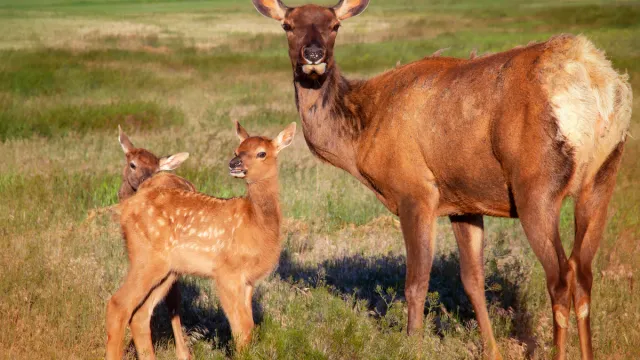Yellowstone Park Officials Issue Warning about "Aggressive" Wildlife
“Attacks can be unprovoked and unpredictable,” say officials of cow elking season.

You may want to hold off on visiting Yellowstone National Park until later this summer, following an announcement from the National Park Service (NPS) alerting visitors of an increase in "aggressive" wildlife.
U.S. national parks are home to hundreds of different wildlife species, ranging from bison and moose to grizzly bears and snakes, so encountering a herd of deer or prairie dogs during your stay isn't out of the ordinary. And it's also one of the draws of heading out into their natural habitats. While wildlife attacks are rare—according to the NPS, the chances of a bear attack at Yellowstone is 1 in 2.7 million visits—they can occur, especially during the months of May and June when cow elk begin to birth their young.
In a May 19 press release, the park service warned Yellowstone visitors to be aware of their surroundings as elk calving season has officially begun and cow elk are known to be "unpredictable." That seems understandable given that these mother elk are being protective of their young.
"Cow elk are much more aggressive towards people during the calving season and may run towards you or kick," officials said in a statement. Rangers advise Yellowstone park visitors to stay vigilant and at least 25 yards away from elk at all times. "Look around corners before exiting buildings or walking around blind spots: cow elk may bed their calves near buildings and under cars," they added.
READ THIS NEXT: Yellowstone National Park's Roads Are "Melting"—Here's What That Means for Visitors.
According to the United States Department of Agriculture's Forest Service, female elk (also called cow elk) "weigh between 500 and 600 pounds, and stand an average of 4.5 feet at shoulder height." In other words, you don't want to get on the bad side of these magnificent creatures, especially when it comes to their babies. An easy way to differentiate a female elk from a male elk is by the animal's antlers. Bull elk, aka male elk, have antlers, while cow elk do not.
For more up-to-date travel information, sign up for our daily newsletter.
If you do find yourself in an encounter with a cow elk, the park service says to "find shelter in your vehicle or behind a tall, sturdy barrier as quickly as possible." Cow elk don't all react the same and can pursue an attack even when unprovoked, so practice caution during your visit.
If getting into a boxing match with a cow elk isn't on your Yellowstone bucket list, consider moving your trip to July or August when elk calving season has ended. You can also browse the park's website to stay up-to-date on wildlife sightings and warnings.





















